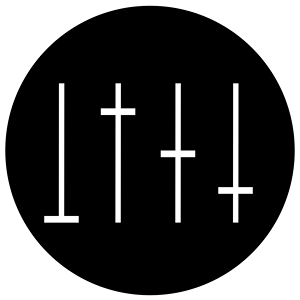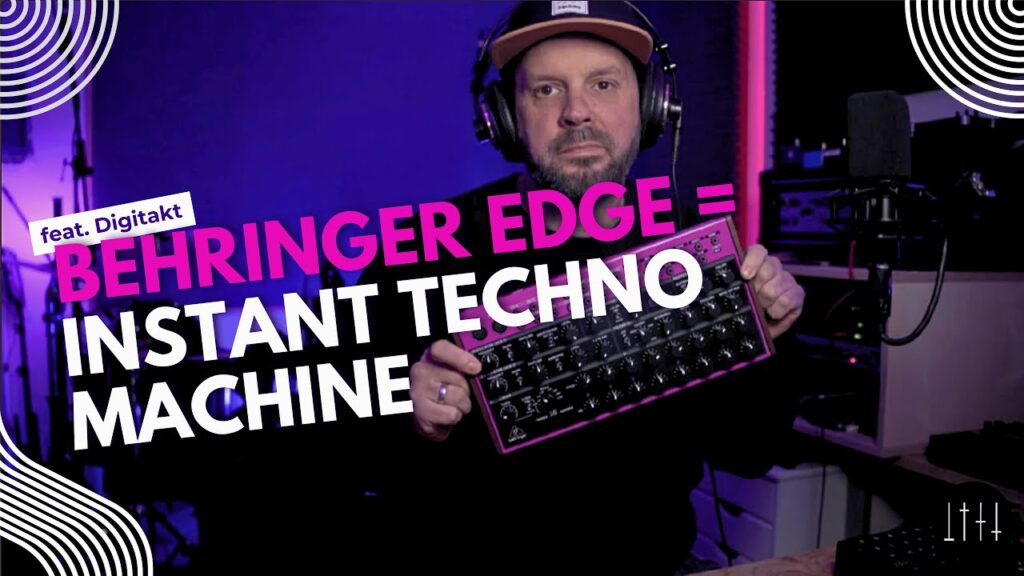Hey music makers, synth nerds, and curious explorers — let’s talk about a little device that’s been stealing my attention for the last couple of hours. Spoiler: it’s the Behringer Edge, and yeah, it’s a bit of a controversial synth. But more importantly, it’s fun — like, seriously fun.
Cheap Knockoff or Hidden Gem?
Let’s address the elephant in the room. Behringer is famous for cloning vintage synths, and the Edge is no exception. It’s often called a “cheap knockoff” of the legendary Moog devices. Purists might turn up their noses, but the reality is simple: not everyone has thousands of dollars to spend on a vintage or boutique synth, and some of those old beasts are impossible to get without paying a premium.
Here’s the kicker — at the end of the day, your music is compressed and played through earbuds, phone speakers, or tiny laptop speakers. So, will the average listener really notice the difference between a classic Moog and this budget-friendly Behringer? Probably not.
For me, the Edge isn’t about owning a collector’s item. It’s about a playful, inspiring piece of gear that invites experimentation and quick creativity. That’s what really matters.
What’s Inside the Behringer Edge?
At first glance, the Edge’s design looks clean and inviting. The purple color is eye-catching and makes it stand out among your other gear. But what’s really exciting is what’s inside:
- Two Oscillators: Each can be set to square or sawtooth waves. Oscillator 1 can frequency-modulate Oscillator 2, offering a range of classic FM tones.
- Envelope Generators: There’s one envelope for each oscillator’s pitch, letting you create dynamic sweeps — great for those acid basslines or percussive effects.
- Noise Generator: Unlike some synths that offer only white noise, the Edge includes both white and pink noise options. This is great for adding texture and character to your percussion sounds.
- VCF (Voltage Controlled Filter): A multi-mode filter with cutoff, resonance, decay, and an envelope. You can even switch between low-pass and high-pass filtering, which adds versatility for live performance and sound design.
- VCA (Voltage Controlled Amplifier): It has adjustable attack times, letting you shape how quickly your sound fades in — essential for percussion synthesis.
- Built-In Sequencer: This eight-step sequencer has two rows of knobs — pitch on the top and velocity on the bottom — making it easy to program and tweak sequences on the fly.
- Patch Bay: This feature allows you to reroute modulation sources in creative ways, such as modulating filter cutoff or FM amount from the sequencer knobs.
And connectivity-wise, it’s got MIDI, USB, and a clock input — so it slots nicely into any hardware or software setup.
Sound Exploration: More Than Just Percussion
Although the Edge is often labeled a percussion synth, its capabilities stretch far beyond drums and hits. The oscillators cover a huge frequency range — from subsonic clicks to piercing high frequencies, letting you experiment with basslines, sound effects, and melodic elements.
The pitch envelopes let you sculpt sounds that rise or fall in pitch with different decay speeds, which can give you those characteristic acid-like slides or futuristic laser zaps. Adding FM modulation spices up the sonic palette, giving complex and evolving timbres that keep things interesting.
The noise generator’s dual white and pink noise options add depth to your percussive hits and textures. Pink noise especially can create a richer, warmer sound compared to the harsher white noise.
Sequencer: Your Creative Playground
The onboard sequencer is surprisingly powerful for such a compact device. The pitch and velocity knobs are very sensitive, which means you can dial in precise notes — but it also means it’s easy to stumble on unexpected, happy accidents that lead to fresh ideas.
You can choose to have the sequencer control one or both oscillators, or even just oscillator 2, which allows you to create complex layered sequences and basslines. The patch bay adds another layer of control by allowing you to map sequencer parameters to filter cutoff or FM modulation, turning simple sequences into dynamic, evolving soundscapes.
Build Quality & Live Use
Physically, the Edge is well-built for its price range. The knobs feel sturdy but sensitive, perfect for quick tweaks without breaking. The MIDI and USB ports are solid and should hold up well for stage or studio use.
While it won’t replace your high-end Moog or Roland synth, it’s a reliable workhorse for live performances, jam sessions, or quick sketching. The compact size also makes it portable — perfect for musicians on the go.
Why The Edge Is Worth Considering
- Price Point: It costs roughly a quarter of what a vintage Moog might set you back. That means you can grab the Edge and still have cash left over for other gear or, you know, a nice dinner out.
- Instant Fun: The Edge is what I call an “instant techno machine.” It invites you to dive in without getting bogged down in menus or complex programming.
- Versatility: From acid basslines to percussive hits and experimental sound design, it’s a versatile synth that punches well above its weight.
- Modular Feel Without the Hassle: The patch bay lets you explore modular-style routing without needing a whole Eurorack setup.
- Built for Experimentation: Its sensitive knobs and broad frequency range make it a great playground for “happy accidents” — those unexpected moments that spark creativity.
Final Thoughts: A Budget Synth That Delivers Big
I won’t pretend the Edge is perfect — it has its quirks, and it’s no Moog, but it’s honest, fun, and surprisingly powerful. For producers and performers looking to add a fresh, playful synth to their collection without emptying their wallet, the Behringer Edge is a serious contender.
Whether you want a new percussion machine, a quirky bassline generator, or an instant techno workhorse, the Edge is worth checking out.
Have you tried the Behringer Edge yet? What sounds are you creating with it? Drop your thoughts and tracks in the comments — let’s keep the conversation going.
If you enjoyed this deep dive, subscribe for more gear reviews, sound design tips, and music production inspiration. Until next time — keep experimenting and keep making magic.

